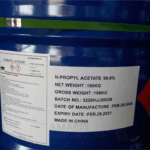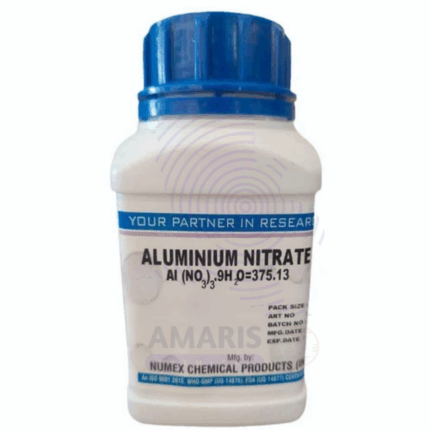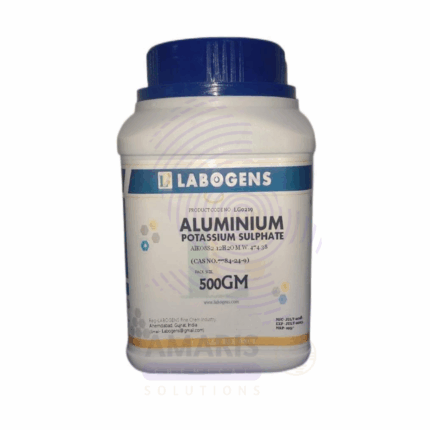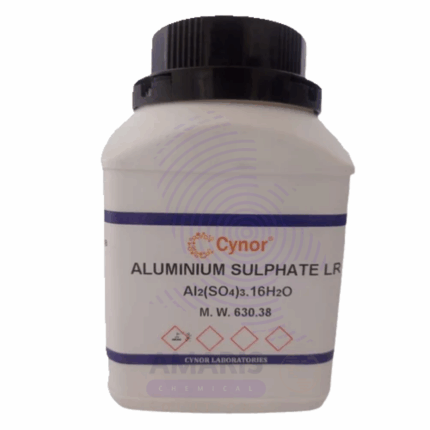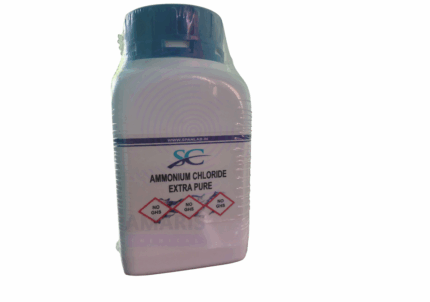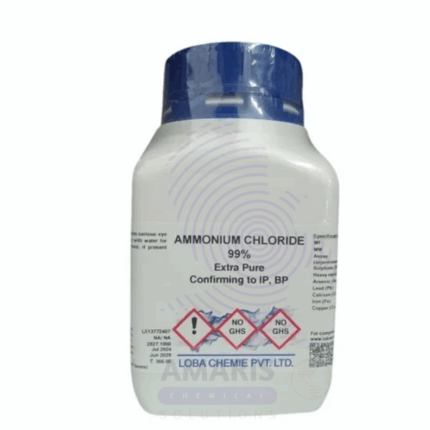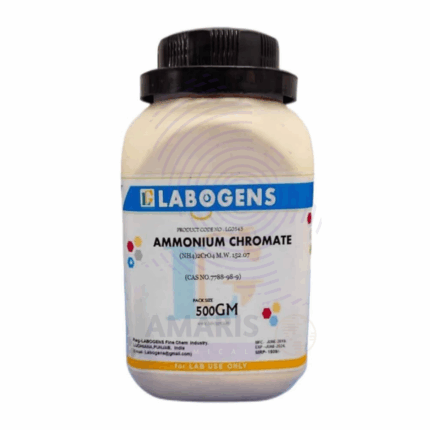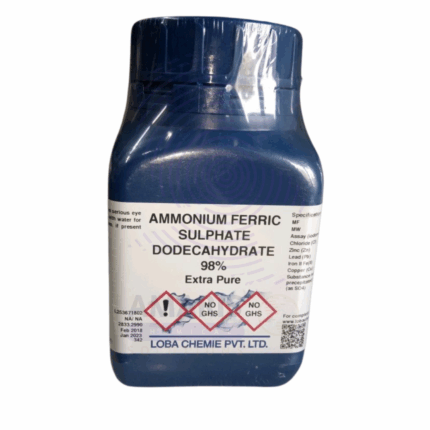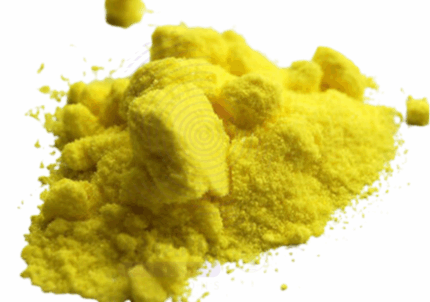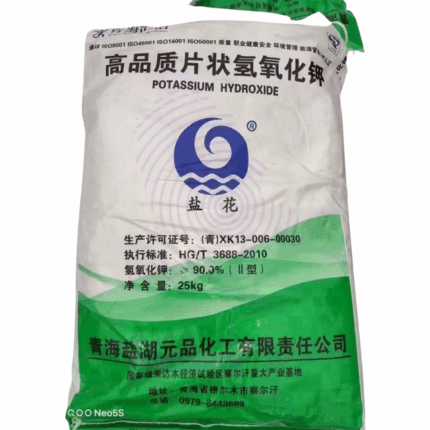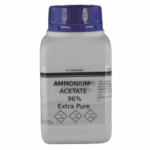
Ammonium Bromide Extra Pure
$ 18.00 Original price was: $ 18.00.$ 17.34Current price is: $ 17.34.
Ammonium Bromide Extra Pure is a high-purity, white crystalline powder highly soluble in water, widely used in laboratory settings for analytical, photographic, and synthetic applications. It serves as a reliable source of bromide ions in chemical reactions and is commonly used in preparing photographic emulsions, corrosion inhibitors, and certain pharmaceuticals. In analytical chemistry, it is employed in qualitative and quantitative analysis involving halide ion detection. The extra pure grade ensures minimal contamination, making it ideal for sensitive research and high-precision work. To preserve its stability and prevent moisture uptake, it should be stored in well-sealed containers in a cool, dry environment.
Ammonium Bromide Extra Pure
Primary Uses
- Source of Bromide Ions in Analytical Chemistry
- Supplies Br⁻ for qualitative analysis, precipitation reactions, and halide ion comparison studies.
- Reagent in Photographic and Imaging Chemistry
- Used in experimental preparation of silver bromide (AgBr) for photosensitive materials in research and educational labs.
- Precursor in Organic and Inorganic Synthesis
- Used in the synthesis of organobromine compounds and complex bromide salts in laboratory settings.
- Conductivity and Electrolyte Studies
- Provides a simple, high-purity ionic compound for electrical conductivity and ion transport experiments.
- Acid-Base Equilibrium Demonstrations
- NH₄⁺ acts as a weak acid; used to demonstrate hydrolysis of weak electrolytes and pH behavior in buffer systems.
Secondary Uses
- Component in Corrosion Testing
- Used in lab-scale studies of halide-induced corrosion on metal surfaces under controlled conditions.
- Reagent in Crystal Growth and Solubility Studies
- Studied for its crystallization behavior, especially in experiments involving salt mixtures and phase diagrams.
- Flame Test for Ammonium & Bromide Detection
- Applied in qualitative flame testing and spectroscopy to analyze cation and anion emissions.
- Simulation of Atmospheric or Marine Chemistry
- Investigated in environmental labs for modeling halide cycles in aerosol or seawater systems.
- Educational Demonstrations in Ionic Compound Properties
- Used in student labs to explore solubility, melting point, and conductivity of ionic solids.
| PACK SIZE |
250 grams Plastic Tin |
|---|
1. Basic Identification Attributes
- Chemical Name: Ammonium Bromide
- CAS Number: 12124-97-9
- HS Code: 28275100 (Bromides of sodium or potassium — falls under general bromides)
- Molecular Formula: NH₄Br
- Synonyms:
- Ammonium monobromide
- Hydrobromic acid, ammonium salt
- NH₄Br
2. Physical & Chemical Properties
- Physical State: Solid (crystalline powder)
- Color & Odor: White or colorless crystals; odorless
- Boiling Point: Decomposes before boiling
- Melting Point: ~235°C
- Density/Specific Gravity: ~2.43 g/cm³
- Solubility:
- Water: Freely soluble (~76 g/100 mL at 25°C)
- Alcohol: Slightly soluble
- pH Level: ~5.0–6.0 (in 5% aqueous solution – mildly acidic)
- Vapor Pressure: Negligible
- Flash Point: Not flammable
- Autoignition Temperature: Not applicable
- Viscosity: Not applicable (solid)
3. Safety & Hazard Attributes
- Hazard Class (GHS):
- Acute Toxicity (Oral, Category 4)
- Eye Irritation (Category 2A)
- Not generally hazardous in small lab quantities, but caution advised
- NFPA Ratings:
- Health: 2
- Flammability: 0
- Reactivity: 0
- Exposure Limits:
- No established OSHA or ACGIH limits
- Use general dust exposure precautions
- Reactivity:
- Stable under normal conditions
- Can release toxic fumes (e.g., NH₃, HBr) if heated to decomposition
4. Storage & Handling Attributes
- Storage Conditions:
- Store in a cool, dry area away from moisture
- Keep container tightly closed
- Incompatible Materials:
- Strong oxidizers, acids, alkalis
- Container Type:
- Glass or HDPE containers
- Shelf Life & Expiration Date:
- ~3 years if sealed and protected from humidity
- Special Handling Requirements:
- Use gloves and goggles
- Avoid inhalation of dust and contact with eyes
5. Regulatory & Compliance Attributes
- Regulatory Status:
- Listed under TSCA, REACH
- Approved for lab and photographic use
- Transportation Restrictions:
- Not regulated for ground or air transport in small lab quantities
- Waste Disposal Method:
- Dissolve and neutralize under controlled lab conditions
- Dispose of as halide waste in accordance with local regulations
6. Environmental & Health Impact
- Ecotoxicity:
- May be harmful to aquatic organisms at high concentrations
- Persistence in Environment:
- Dissociates into bromide and ammonium ions
- Carcinogenicity/Mutagenicity:
- Not classified as carcinogenic
- Biodegradability:
- Inorganic salt; not biodegradable, but environmentally manageable
SAFETY PRECAUTIONS
- Personal Protective Equipment (PPE):
- Wear a lab coat, safety goggles, and chemical-resistant gloves (e.g., nitrile or neoprene).
- Use a dust mask or work in a fume hood to avoid inhalation of powder.
- Handling:
- Avoid breathing dust and prevent contact with skin, eyes, and clothing.
- Use in a well-ventilated area or under a chemical fume hood.
- Keep container tightly closed when not in use.
- Avoid mixing with strong acids, oxidizers, or alkalis.
- Storage:
- Store in a cool, dry, well-ventilated area in a tightly sealed container.
- Protect from moisture (hygroscopic).
- Keep away from incompatible substances like strong oxidizers and acids.
- Hygiene Measures:
- Wash hands thoroughly after handling.
- Avoid touching face, especially eyes and mouth.
- Do not eat, drink, or smoke in the lab area.
FIRST AID MEASURES
- Inhalation:
- Move the affected person to fresh air.
- Seek medical attention if symptoms like coughing or shortness of breath develop.
- Provide oxygen if breathing becomes difficult.
- Skin Contact:
- Wash thoroughly with soap and water.
- Remove contaminated clothing.
- Seek medical attention if irritation or rash occurs.
- Eye Contact:
- Rinse cautiously with clean water for at least 15 minutes, lifting upper and lower eyelids occasionally.
- Remove contact lenses if present and easy to do.
- Seek medical attention if irritation persists.
- Ingestion:
- Rinse mouth with water.
- Do not induce vomiting.
- Give water only if the person is fully conscious.
- Seek immediate medical attention.
FIRE FIGHTING MEASURES
- Suitable Extinguishing Media:
- Use water spray, dry chemical powder, carbon dioxide (CO₂), or foam depending on surrounding materials.
- Specific Hazards:
- Non-flammable, but may release toxic fumes of ammonia and hydrogen bromide (HBr) if heated or involved in a fire.
- Protective Equipment for Firefighters:
- Wear full protective clothing and a self-contained breathing apparatus (SCBA).
- Firefighting Instructions:
- Evacuate the area and isolate the hazard.
- Cool fire-exposed containers with water spray.
- Avoid inhaling fumes—ventilate after the fire is extinguished.


 Preservatives(food)
Preservatives(food) Flavor Enhancers
Flavor Enhancers Acidulants
Acidulants Sweeteners
Sweeteners Antioxidants
Antioxidants Colorants(food)
Colorants(food) Nutraceutical Ingredients (food)
Nutraceutical Ingredients (food) Nutrient Supplements
Nutrient Supplements Emulsifiers
Emulsifiers
 Collectors
Collectors Dust Suppressants
Dust Suppressants Explosives and Blasting Agents
Explosives and Blasting Agents Flocculants and Coagulants
Flocculants and Coagulants Frothers
Frothers Leaching Agents
Leaching Agents pH Modifiers
pH Modifiers Precious Metal Extraction Agents
Precious Metal Extraction Agents
 Antioxidants(plastic)
Antioxidants(plastic) Colorants (Pigments, Dyes)
Colorants (Pigments, Dyes) Fillers and Reinforcements
Fillers and Reinforcements Flame Retardants
Flame Retardants Monomers
Monomers Plasticizers
Plasticizers Polymerization Initiators
Polymerization Initiators Stabilizers (UV, Heat)
Stabilizers (UV, Heat)
 Antifoaming Agents
Antifoaming Agents Chelating Agents
Chelating Agents Coagulants and Flocculants
Coagulants and Flocculants Corrosion Inhibitors
Corrosion Inhibitors Disinfectants and Biocides
Disinfectants and Biocides Oxidizing Agents
Oxidizing Agents pH Adjusters
pH Adjusters Scale Inhibitors( water)
Scale Inhibitors( water)
 Antioxidants(cosmetic)
Antioxidants(cosmetic) Emollients
Emollients Fragrances and Essential Oils
Fragrances and Essential Oils Humectants
Humectants Preservatives
Preservatives Surfactants(cosmetic)
Surfactants(cosmetic) Thickeners
Thickeners UV Filters
UV Filters
 Fertilizers
Fertilizers Soil Conditioners
Soil Conditioners Plant Growth Regulators
Plant Growth Regulators Animal Feed Additives
Animal Feed Additives Biostimulants
Biostimulants Pesticides (Herbicides, Insecticides, Fungicides)
Pesticides (Herbicides, Insecticides, Fungicides)
 Active Pharmaceutical Ingredients (APIs)
Active Pharmaceutical Ingredients (APIs) Excipients
Excipients Solvents(pharmaceutical)
Solvents(pharmaceutical) Antibiotics
Antibiotics Antiseptics and Disinfectants
Antiseptics and Disinfectants Vaccine Adjuvants
Vaccine Adjuvants Nutraceutical Ingredients (pharmaceutical)
Nutraceutical Ingredients (pharmaceutical) Analgesics & Antipyretics
Analgesics & Antipyretics
 Analytical Reagents
Analytical Reagents Solvents(lab)
Solvents(lab) Chromatography Chemicals
Chromatography Chemicals Spectroscopy Reagents
Spectroscopy Reagents microbiology-and-cell-culture-reagents
microbiology-and-cell-culture-reagents Molecular Biology Reagents
Molecular Biology Reagents Biochemical Reagents
Biochemical Reagents Inorganic and Organic Standards
Inorganic and Organic Standards Laboratory Safety Chemicals
Laboratory Safety Chemicals Specialty Laboratory Chemicals(Special Laboratory Equipment)
Specialty Laboratory Chemicals(Special Laboratory Equipment)
 Demulsifiers
Demulsifiers Hydraulic Fracturing Fluids
Hydraulic Fracturing Fluids Scale Inhibitors(oil)
Scale Inhibitors(oil) Surfactants(oil)
Surfactants(oil) Drilling Fluids
Drilling Fluids
 Dyes and Pigments
Dyes and Pigments Bleaching Agents
Bleaching Agents Softening Agents
Softening Agents Finishing Agents
Finishing Agents Antistatic Agents
Antistatic Agents
 Admixtures
Admixtures Waterproofing Agents
Waterproofing Agents Sealants and Adhesives
Sealants and Adhesives Curing Compounds
Curing Compounds Concrete Repair Chemicals
Concrete Repair Chemicals Anti-Corrosion Coatings
Anti-Corrosion Coatings
 Surfactants(cleaning)
Surfactants(cleaning) Builders
Builders Enzymes
Enzymes Solvents (Cleaning)
Solvents (Cleaning) Fragrances
Fragrances
 Electronic Chemicals
Electronic Chemicals Catalysts
Catalysts Lubricants
Lubricants Photographic Chemicals
Photographic Chemicals Refrigerants
Refrigerants Automotive chemicals
Automotive chemicals Pyrotechnic Chemicals
Pyrotechnic Chemicals
 Biodegradable Surfactants
Biodegradable Surfactants Bio-based Solvents
Bio-based Solvents Renewable Polymers
Renewable Polymers Carbon Capture Chemicals
Carbon Capture Chemicals Wastewater Treatment Chemicals
Wastewater Treatment Chemicals
 Pigments
Pigments Solvents(paint)
Solvents(paint) Specialty Coatings
Specialty Coatings Binders/Resins
Binders/Resins Additives
Additives Driers
Driers Anti-Corrosion Agents
Anti-Corrosion Agents Functional Coatings
Functional Coatings Application-Specific Coatings
Application-Specific Coatings
 Fresh Herbs
Fresh Herbs Ground Spices
Ground Spices Whole Spices
Whole Spices Spice Blends
Spice Blends Dried Herbs
Dried Herbs
 Leavening Agents
Leavening Agents Dough Conditioners
Dough Conditioners Flour Treatments
Flour Treatments Fat Replacers
Fat Replacers Decoratives
Decoratives Preservatives(baking)
Preservatives(baking)
 Plasticizers & Softeners
Plasticizers & Softeners Reinforcing Agents
Reinforcing Agents Adhesion Promoters
Adhesion Promoters Vulcanizing Agents
Vulcanizing Agents Antidegradants
Antidegradants Blowing Agents
Blowing Agents Fillers & Extenders
Fillers & Extenders Accelerators & Retarders
Accelerators & Retarders
